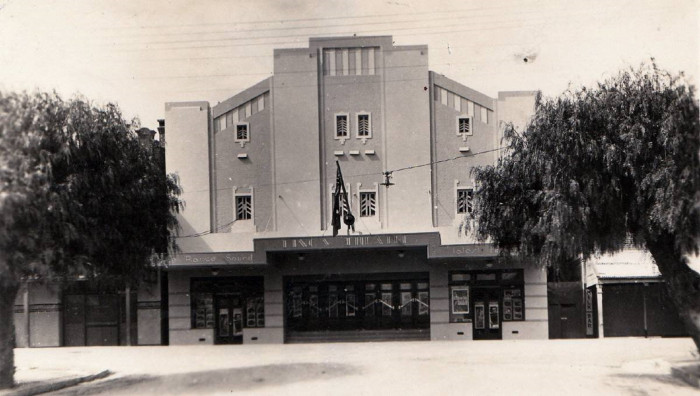South Coast NSW History Story
King's Theatre, Bega
The King’s Theatre was built in 1935. It was designed for Violet Mary Bardsley by Kaberry and Chard (a Sydney-based theatre architectural company that also designed Sydney’s Empire Theatre (later Her Majesty’s), the Enmore Theatre and the Valhalla Theatre) in the then-popular art deco style. The interior displayed Mayan motif decorations.
The theatre seated 900 people and initially, on Saturday nights, almost every seat was reserved, making it very difficult for visitors to Bega to get seats. As a result, after a short time, seats could not be booked – so a queue would form up Carp St, then up Clark Lane and around to the back of the theatre. Men would wear tuxedos and women the latest fashions. The first eight rows of the downstairs stalls were always full of Aboriginals – possibly because they were forced to sit there, possibly because these were the cheapest seats. The most important people (e.g. the Mayor) sat in the back row of the dress circle.
Overcrowding was a controversial and common occurrence (a screening of ‘Davey Crocket’ attracted 1,117 moviegoers and ‘every step and space was filled’. Later the manager, Ted Thistleton, was fined £1 for overcrowding the theatre at a screening of ‘Snow White.’) ‘The Sound of Music was claimed as a ‘state success’ in Bega where it was shown thirty-five times with everyone in town going to see it at least once’. The Bega Band regularly played in front of the theatre on Wednesday nights to attract patrons; the Band members were then provided with free tickets to the movies.
The theatre functioned until the 1980s when television and videos led to its demise. In the early 1980s all the stalls seats were removed and the downstairs section of the theatre was used for roller skating. Movies were still screened upstairs. In 1991-92 the downstairs area was converted into shops.
(The main cinema space is now used by a furniture retailer. Many of the original theatre features (such as the stage, the upstairs circle, the Mayan motifs) are still clearly visible.)
